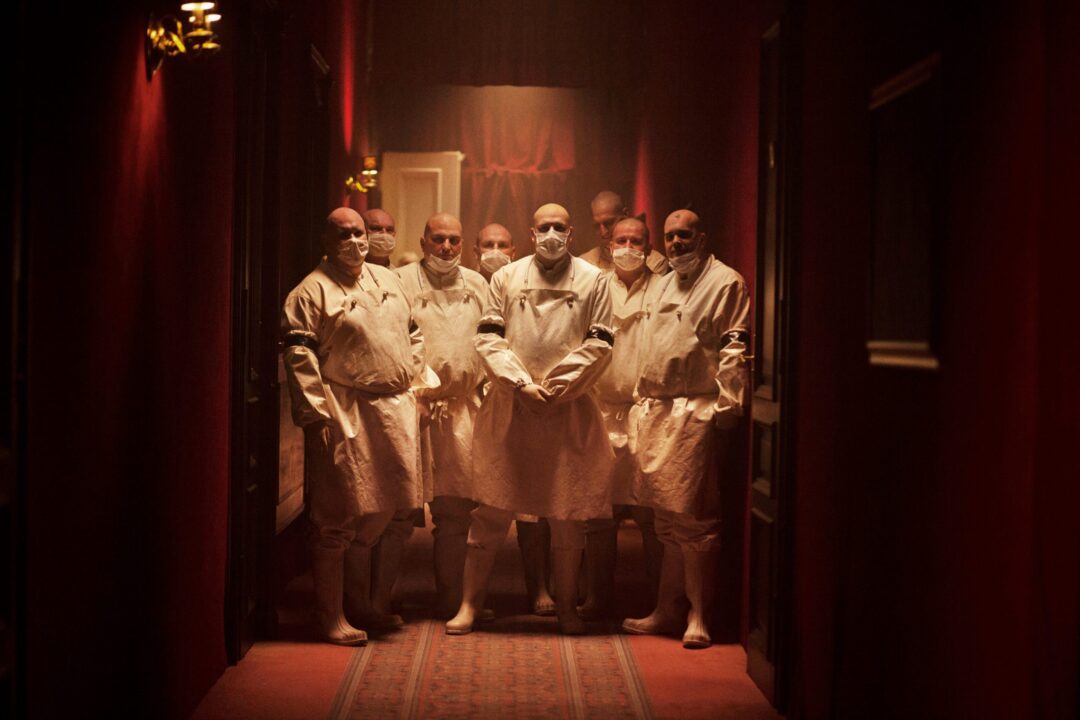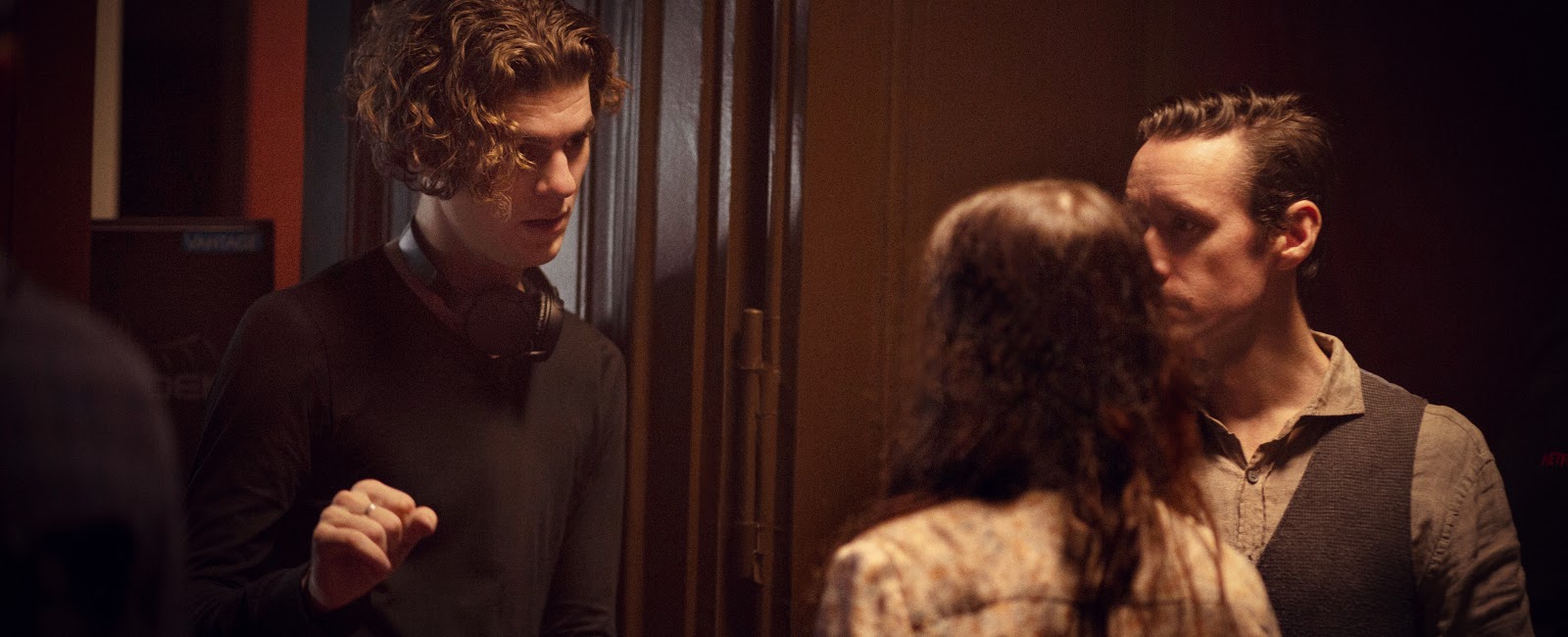This Halloween season, the market for spooky escapism is bigger than ever. Cadaver is not escapism, but rather about escapism. In this Norwegian direct-to-Netflix horror/thriller, former actress Leonora (Gitte Witt) and her family embark on a night out at a mysterious hotel/theater. Lured by the promise of a free meal and show in the middle of a war-induced famine, Leo and her family become immersed in the strange world of the hotel. As the night continues, and audience members begin to disappear, Leo finds herself in a fight for her life, where nothing is as it first appears.

The strongest aspect of Cadaver is its interrogation of art, the artist, the audience, and the lines between those things. The play that the characters witness in the hotel has no stage, instead playing out among the guests and in various hotel rooms. As the film progresses, characters become both physically and metaphorically absorbed into the world of the play. The only thing separating the guests from the actors are metal masks, making the distinction between the two mutable and easy to manipulate. Leo navigates the hotel, and eventually tries to escape it, by transgressing these boundaries, switching from art to audience to artist in the blink of an eye. The distinction between artist and audience can change on a dime and, in one of the film’s most striking sequences, can spell the difference between life and death. In a similar vein to Emily St. John Mandel’s Station Eleven, Cadaver interrogates the role of art in a world where life has become solely a matter of survival. In Cadaver, art is at various points escapism, a method of processing trauma, and a means for survival. Indeed, questions of survival loom large over Cadaver. The film asks what we’ll do for survival, and, ultimately, what that word even means in a post-apocalyptic society. It asks what we can excuse in the name of survival, and if survival is something worth risking in order to implement large scale change.
The biggest mistake Cadaver makes is that it tries to tackle far too many concepts at the same time. The nature of art, the meaning of survival, class stratification, trauma, and the role of fantasy in modern life are all great things to make movies about. Writing about all of them, however, can lead to mixed metaphors and muddled meanings. Cadaver is a good film, but its density of ideas keeps it from being better.

The nail in the coffin for Cadaver, however, is its bleak and catharsis-free ending. After spending an hour and a half touting the importance of art and imagination, and their roles in social change, the film disregards those very principles. Cadaver is quick to remind its audience that no matter your victories, no matter your method of escapism, the harsh world outside will always be waiting for you, just around the corner. Cadaver is a circle, ending almost exactly where it begins, with minimal change. It leaves one wondering what the point of it all was. Maybe that pointlessness is the point. But if that’s true, then why even bother making a film in the first place? Why make something whose message ultimately boils down to the futility of all attempts at societal change? Ultimately, it’s Cadaver’s hopelessness and disinterest in meaning that hold it back from saying anything truly impactful.
Consuming post-apocalyptic media during the pandemic is an interesting exercise, with our current situation allowing us to bring a great deal more to the text than we might have otherwise. While Cadaver has rich visuals, an engrossing plot, and some truly interesting things to say, it’s dragged down by its thematic density, lack of clarity, and tonally jarring ending. Still, it at least has something new to say, and that’s always worth something in this day and age.
3/5 STARS
